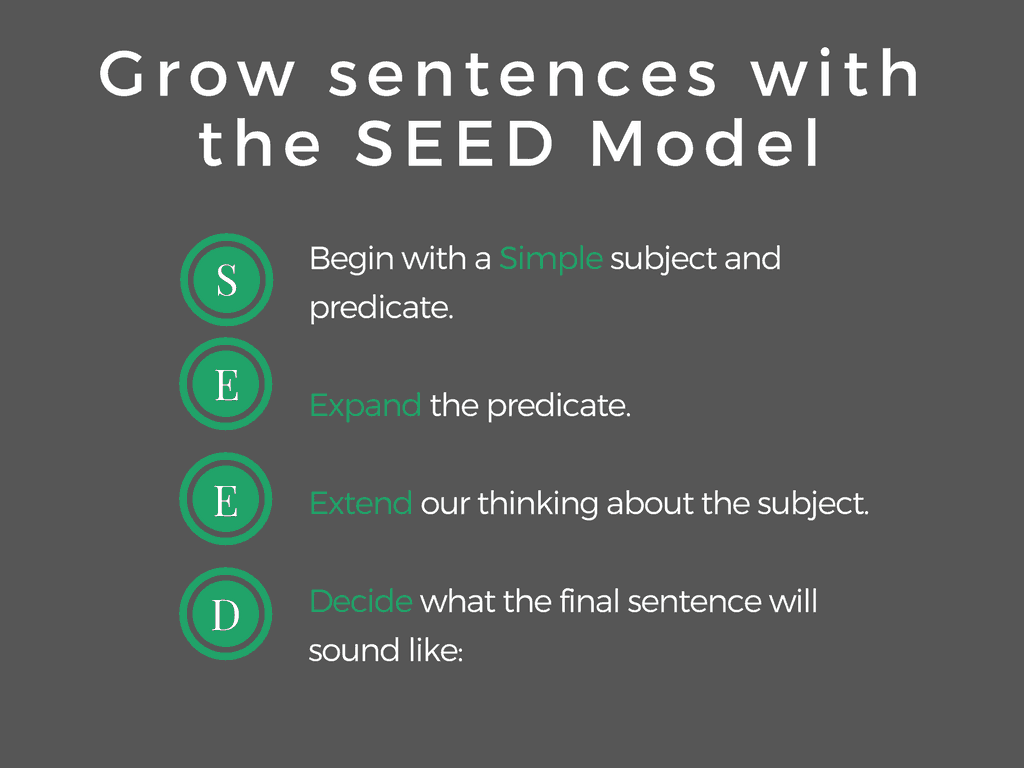This blog post originally appeared on The Reading Teacher’s Top Ten Tools blog on February 6, 2018. You can find the original posting here.
Last February I wrote about writing and it garnered quite a bit of attention – and rightly so! We want our students to be writers, and we know that just asking kids to write is not going to TEACH them HOW to write. When you read between the lines, these are the implicit questions one asks, “How do I teach my students to write? What do I need to understand about writing and what can I do to bridge that knowledge to my practice?”
The Action Behind Writing
We need reminding sometimes, that there is a lot going on in those young brains when students write. And all of those ‘goings-on’ need a lot of practice to become automatic. I’m not just talking about the cohesive ordered ideas that must form in the mind as sentences connected one to the other, or the right choice of words from an individual’s storehouse of vocabulary, but also everything from the pencil grip, letter formation, spelling (which includes phoneme awareness and the grapheme-phoneme match), even spaces between words! Wow. Writing IS a demanding task.
Transcription skills, what it takes to transfer thought to paper, impacts writing fluency. Transcription skills are the skills that determine whether or not there will be a seamless transfer of those important ideas to print. Transcription skills are where the rubber meets the road.
So, here’s a mantra for us – Make it Tight – Let’s Write!
Make it tight – Tighten up our instruction to include the transcription skills (letter formation, spelling, handwriting, sentence construction) and provide a lot of practice to help those skills transfer our students’ language seamlessly to paper. We teachers must provide the workouts that will build strong writers!
Let’s write – Engage students in brief daily writing exercises to practice the skills we teach. Here’s how we fit it all in – no need to have an extra writing period. Connect writing exercises to the content students are learning. Writing, and writing instruction, can happen in response to any subject. Teach students how to:
- verbalize what they are learning and reading about and how to list key words.
- formulate sentences, and or build paragraphs in response to their learning.
- “talk aloud” their thinking. Model for students how to apply a structure, a plan in response to metacognitive prompts.
- use oral rehearsal to first say what they will write and then to write their answers.
Let’s focus on two types of daily writing that provide the opportunity for instruction and writing that will build strong writers: Notes, and Sentences.
Notes
Writing notes is a perfect marriage to practicing the transcription skills and also building the foundation for summary writing (determining and organizing details under main ideas). Writing notes demands very little of the phonological working memory. Students only have to remember one, two or three words to jot down instead of whole sentences. This provides an ideal opportunity for building automaticity of the handwriting, letter formation, and spelling skills.
- Younger students will benefit from making ‘lists’. Making lists provides ample opportunity to practice spelling and writing skills when asked to list all the things the character in the book did at the park. Use two column organizers for this exercise.
- Two column notes – Provide the main idea and ask students to verbalize the details to fit. With narratives, students could fill in the story elements – setting, characters, problem, solution, resolution. Informational text and content learning – main ideas and topics provide headings under which the details can be gathered.
- Brainstorm parts of speech – verbs, adjectives, etc. in relationship to reading material.
- Bold headings – headings provide the main idea, teach students to formulate a question based on the main idea and then read to find the answer. For example, if the bold heading in a text is, Our Natural Resources, a question we might ask is, “What are our natural resources?” After asking this question, students are primed to find the details that fit with their key idea and write them down.
Sentences
Writing sentences is a skill that benefits from intentional instruction. A new book and national effort to improve writing and critical thinking by Hochman and Wexler, The Writing Revolution, is one of many resources out there to help us learn HOW to teach sentence writing.
Sentences are the backbone of written text. Constructing sentences and connecting ideas across multiple sentences is not an easy task, yet that is how we convey our thinking in writing. As it turns out, our knowledge of sentences is also linked to our ability to comprehend when we read! Time spent learning how sentences work, how to write good sentences and combinations of sentences, will not only improve students’ writing but will also potentially result in improved reading!
Here are a couple of ideas:
- Combining Sentences – Remember those combining sentence exercises we had to do in school? Well, guess what? There is good research behind the exercise! Bring sentence combining into your lessons to make the exercise pertinent to what students are learning. Find two adjacent sentences in student reading material, or what you are reading to students, that can be combined with a conjunction (for, and, nor, but, or, yet and others). Present these and work with students to determine the relationship between the sentences, then the ‘combining word’ that will be used to make one big sentence from the two. Rehearse the sentence orally until the right sentence is found and then write it. Below is a video to help you see how a lesson about combining sentences looks.
- Sentence Frames – young students benefit from being given a sentence frame in which to plug information about their learning. Who or What – Action – When. Who or What – Action – You can combine when and where and even why or how in the same sentence. You can also use linking verbs instead of action verbs. Here is a link to some sentence frame examples.
- Grow Sentences – Use a technique I like to call SEED to help students see how simple sentences can grow, just like a seed when we plant it and feed it. Ask questions to gather information that will be used to expand the predicate. Then, lead students to say something else about the subject that will extend our thinking about it – adjectives? Add an appositive? Once all of this is gathered, work to order the resulting phrases, perhaps add a conjunction, decide what the final sentence will sound like.
S – Begin with a Simple subject and predicate. Families shopped.
E – Expand the predicate. “Where did they shop?” at the outdoor market, “How did they shop?” quickly, “Why did they shop?” to prepare a picnic for the beach.
E – Extend our thinking about the subject. “Describe the families.” They were excited
D – Decide what the final sentence will sound like, add some more detail:
The excited families shopped quickly at the outdoor market to prepare for a picnic at the beach on a sunny summer day.
Writing is a many faceted thing, a skill that takes many years to develop. We can help build the transcription and language skills needed for writing through daily brief writing exercises. If you liked these writing ideas, you will enjoy The Reading Teacher’s Top Ten Tools. Check it out!


















Thank you for this informative article
I can appreciate the information on transcription skills, combining sentences, sentence frames and grow sentences.
We write every day in our journals and also with our spelling and vocab words.
There is a lot of information within this module to digest. Things I learned in third grade are coming back to me. I absolutely hated writing sentences. Now I do enjoy it more but still not much.
I found the information in this article very informative. Sentence structure is a problem for even my high school students. Maybe, going back to some basics from elementary school would be helpful for them.